
ASH CLOUD
Ash Sweeting
All episodes
Best episodes
Seasons
Top 10 ASH CLOUD Episodes
Goodpods has curated a list of the 10 best ASH CLOUD episodes, ranked by the number of listens and likes each episode have garnered from our listeners. If you are listening to ASH CLOUD for the first time, there's no better place to start than with one of these standout episodes. If you are a fan of the show, vote for your favorite ASH CLOUD episode by adding your comments to the episode page.
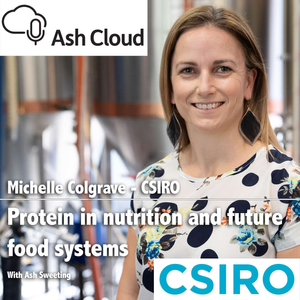
Protein and the roles it plays in nutrition and future food systems with Michelle Colgrave CSIRO
ASH CLOUD
05/07/24 • 56 min
This episode of Ash Cloud is brought to you in partnership with CSIRO.
Proteins play many critical roles in our bodies, and in the plants, animals, fungi and microbes that are our source of food and nutrition. Disease, brain function, appetite, movement, allergies, and thousands of other metabolic process all require proteins. This is in addition to the need for protein to build and maintain muscle. Growing global populations are dramatically increasing protein demand and this demand is putting ever greater pressure on our climate and environment. Meeting this demand sustainably requires new thinking on how we produce and consume protein.
Michelle Colgrave is the Deputy Director (Impact) at CSIRO Agriculture and Food where she uses her scientific background in the study of proteins across agriculture and food science to benefit human health and food sustainability. Together with her CSIRO team and partner organizations she is working to deliver more sustainable, productive, and resilient agricultural and food systems.
Balancing the roles of plant protein, animal protein, and novel non meat proteins is an opportunity to enhance the amount of protein we can produce sustainably. Michelle and her team prefer the term complimentary protein to describe the suite of new and emerging protein technologies including fermentation, algae, fungi, insect, and cell cultures that can improve productivity, nutrient composition, bioavailability, and the flavour of novels foods.
I recently caught up with Michelle to discuss opportunities to improve the sustainability of protein production, the important research her team is doing to alleviate the negative affects that allergy causing anti-nutritional proteins have on the lives of thousand of people globally, opportunities to enhance hybrid foods by incorporating legumes, and the work she is doing with New Mexico University to improve reproductive efficiency in livestock.
You can listen to our conversation here.
Additional information on the work of CSIRO Agriculture and Food that we discussed in this episode can be found at these links:
https://www.csiro.au/en/news/all/articles/2022/january/whats-brewing-precision-fermentation
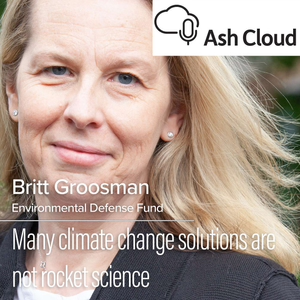
We are always going to have emissions from growing food. There is no way agriculture can get to zero emissions. More than any other industry climate change affects agriculture and agriculture effects climate change. Britt Groosman leads efforts to decrease the environmental footprint of food production at the Environmental defense Fund (https://www.edf.org/). The initial focus are the world’s largest greenhouse gas emitters, the United States, China, India, and Europe. Her team concentrates on understanding where emissions come from, how these emissions affect farmers, rural communities, broader society, and nature, then identifying big leverage points for change.
The first big leverage point is methane, especially livestock methane. Britt sees an urgent need to find practical ways of reducing methane emissions in the next 20 year. “We are in a hurry here. We are not going to convince everybody to become vegan in the next five, or 10, or even 20 years, and maybe we don’t need to.”
The challenges vary significantly across the different geopolitical landscapes. In India her team is developing partnerships with dairy cooperatives to provide advice and financing to millions of small holder farmers to increase productivity, improve livelihoods, and reduce their methane emissions. Digital technology is being deployed to decouple economic development from climate issues, helping enable India to avoid taking the high emitting pathway to economic development we made in the West. In the United States EDF has brought together and fostered uncomfortable partnerships that include Big Ag, The Farm Bureau, and other environmental groups to negotiate climate policy. This group, The Food and Agriculture Climate Alliance, (https://agclimatealliance.com/) recently published 40 joint recommendations to the Farm Bill. These achievements have been based on a pragmatic approach that listens to their audience and does not try and advocate change without first walking a mile in the other person’s shoes.
Technology innovation alone is not a pathway to food sustainability, despite all the current energy, discussion, and investment in innovation. Britt and her team have identified two additional gaps that need to be overcome. Firstly, without political will or the ambition to want to do things differently nothing will change. Despite the US Ministry of Defence identifying climate change as a near and imminent threat almost two decades ago, until quite recently climate change and agriculture were not discussed in the same sentence. Secondly, there is a huge implementation gap. In many cases we know what we need to do but we haven’t figured out how to incentivize the necessary behavioural change.
There is no one size fits all solution. “It’s really dangerous to look at just one indicator. Yes, we’re all in about climate, and yes, we can’t have it being to the detriment of other important factors such as community, social cohesion, environmental justice issues, biodiversity issues, etc.”
Personally, Britt fees very deeply for the developing counties at sticky end of climate change. Frequently these countries did not create the pollution that is causing current levels of warming. She personally feels we need reduce emissions, invest in adaptation and that western world owes it to the global south to help them.
I recently caught up with Britt to hear more about her work, you can listen to the conversation here.
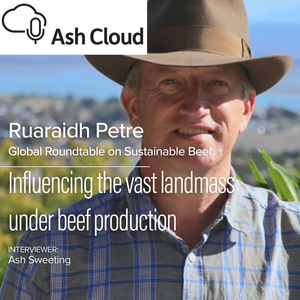
There is arguably more land under the management of people producing beef, sheep, and goats than under any other industry. Having access to all these people and the land they manage provides an opportunity to impact a significant percentage of the world’s land area. Creating the incentives to encourage and reward climate friendly and nature positive livestock management practices is both one of the greatest challenges and largest opportunities to limit global warming.
The Global Roundtable on Sustainable Beef (https://grsbeef.org/) has grown to include 24 countries across 12 Roundtables. In 2021 GRSB set three goals, to reduce the net global warming impact of beef by 30% by 2030 on the pathway to climate neutrality, to become a net positive contributor to nature by 2030, and on animal welfare, to Provide cattle with an environment in which they can thrive. GRSB is now adding a fourth goal focusing on the social role of beef production from both the producer side and more broadly across society. Livestock have a key role in the maintenance of landscape, provision of nutrition, employment, religious and cultural events, and social status. This is especially relevant in many arid and lower income countries where livestock frequently is a cornerstone of food production and rural economies.
When the precursor to the GRSB first met in Denver in 2010 many people at the meeting had never sat in a room together. The meeting included a number of fairly beefy security guards because Ruaraidh was concerned things may get heated. It was a question of trust.
As people continued to meet over the next 10-12 years and got to know each other trust was built, especially as people realized they all wanted to head in the same direction, and they could actually learn from each other.
Methane emission is something that the industry has the ability to limit. Breeding companies are currently looking into using genetics to limit methane emission, improved grazing management also has a big role to play.
I recently caught up with Ruaraidh to hear more about his work. You can listen to his conversation here.
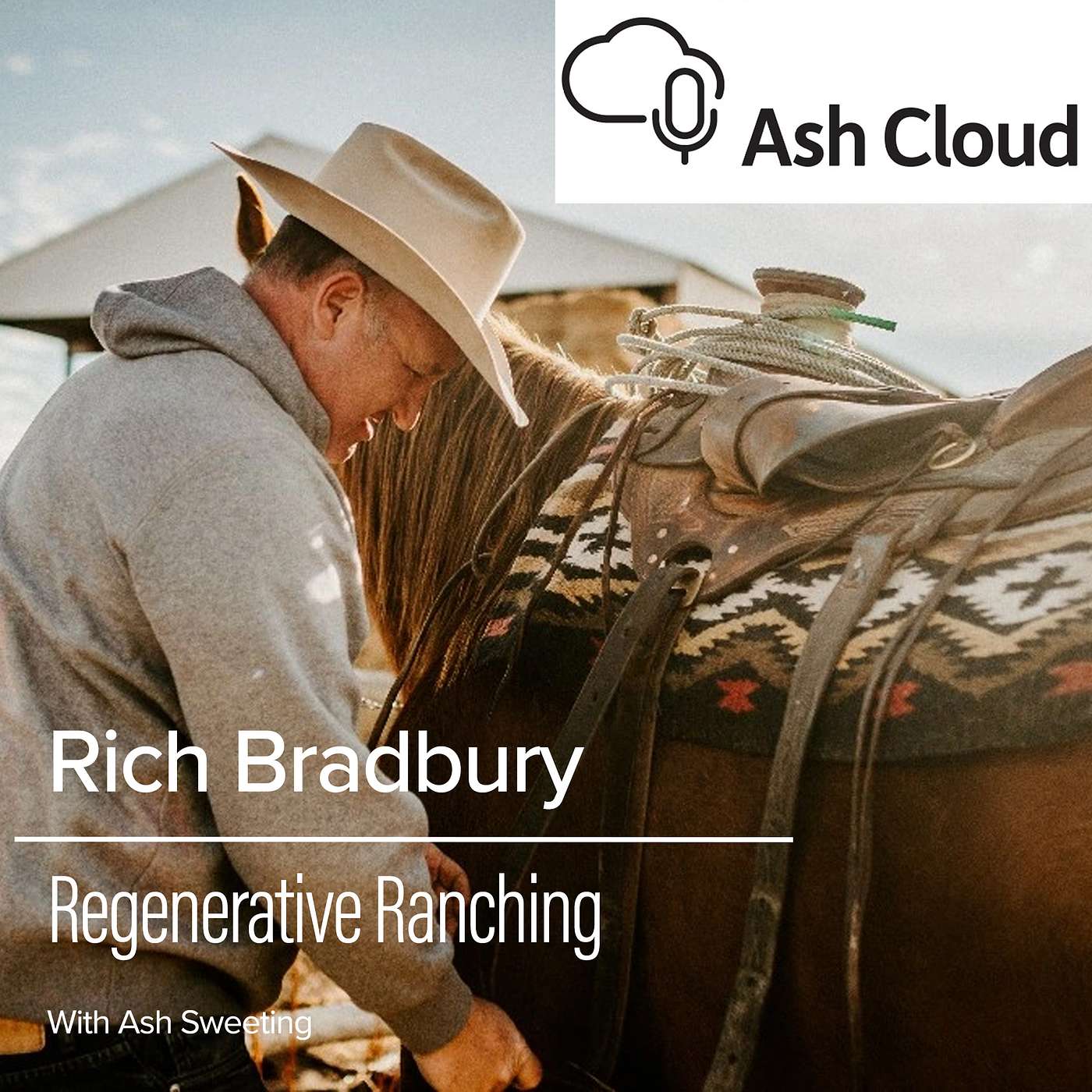
09/13/24 • 54 min
Regenerative ranching has recently gained traction across the main stream media but the idea of using livestock to mimic nature and managing a landscape holistically was largely led by Allan Savory from the 1980s. Rich Bradbury' parents attended the Savory Institute in the 1980's which was when he was first exposed to the holistic approach that Allan Savory brings to ranching. I recently caught up with Rich to hear how this has impacted his thinking and the way he manages his ranch to this day.
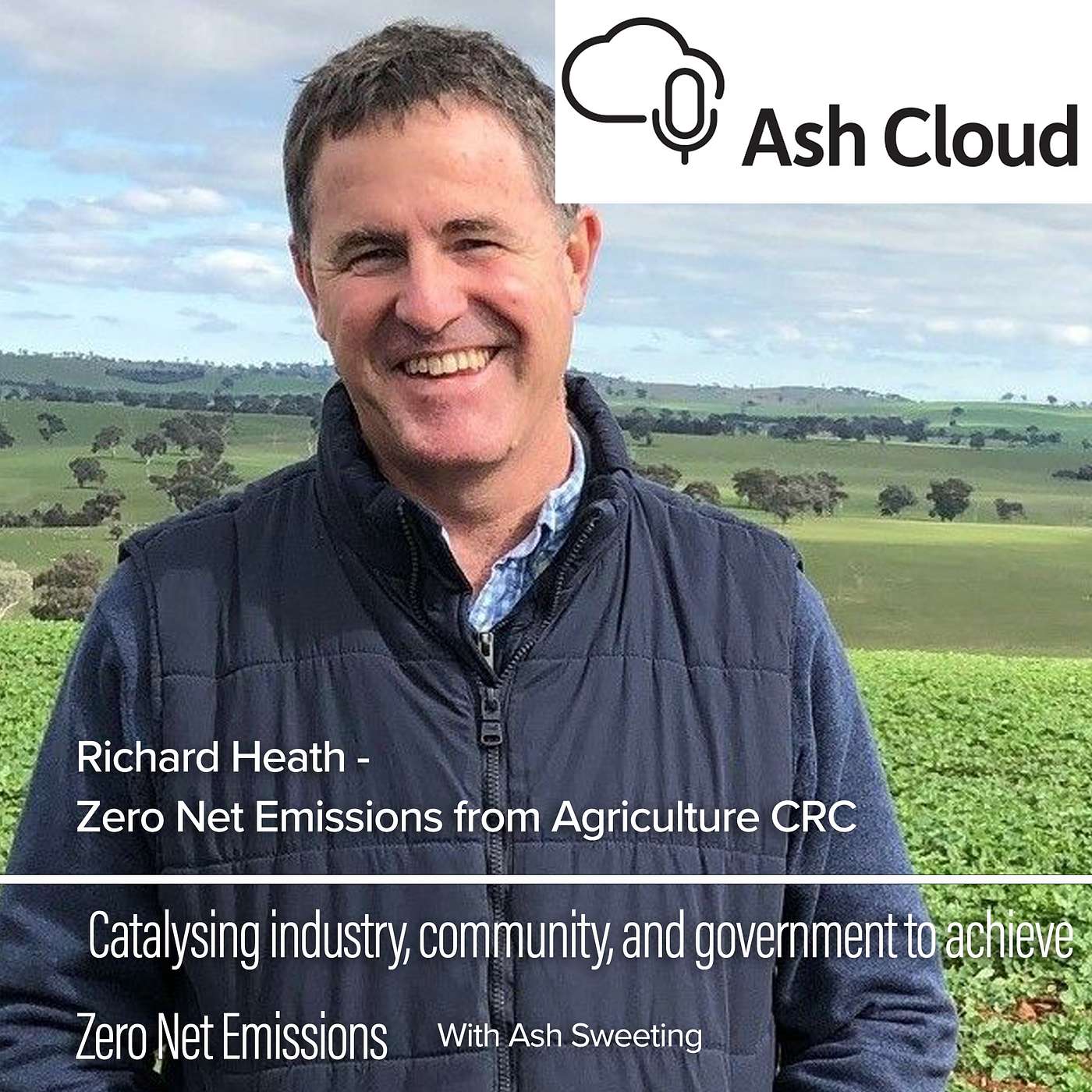
The Zero Net Emissions from Agriculture Cooperative Research Council (ZNE-Ag CRC) is a key component of achieving the commitment to achieve net zero emissions by 2040. The CRC comprises of 73 partenrs who have committed $AU87 million in cash which is matched by the Austrlain Federal Government. This becomes a $AU300 million program when in kind contributions are included.
Richard Heath is the CEO of the ZNE-Ag CRC who brings decades of experience across research policy and hands on farming. I recently caught up with Richard to hear more about the pans for the ZNE-Ag CRC. You can listen to our conversation here.
The ZNE-Ag CRC has four pillars that will foster collaborative researtch that includes industry partners and farmers to adress the key opportunities for emissions reduction across australian agriculture. Given the nature of food prodiuction across australia enteric methane reduction is the number one priority.
1: Low-emissions plant solutions
Focused on reducing nitreous oxide and carbon diaoxide emissions across acre cropping, horticulture, and improving pasture species and grazing management to reduce enteric emissions.
2: Towards methane-free cattle and sheep
Focused on breeding for lower emissions, imporved grazing management and delivery of feed additives to grazing animals. All of which require greatly expanded methane monitoring capitcty to be implementable.
3: Whole-farm and mixed enterprise systems analysis
As there will be no silver bullet this is pillar will integrate all the learnings to provide farmers with the guidelines and tools to implement lower emissions management practices and technologies
4: Delivering Value from Net Zero
This pillar will be integrating renewable energy and circvular economy solutions into autralian farming systems

The intersection between climate change and armed conflict is complex. For those who have not witnessed the difference between the devestation and social upheaval that results from war compared with any other form of social upheaval it is almost impossible to explain. This is why I see great importance in further understanding these intersections. Climate related violence is a messy marriage of climate stress and poor governance.
ISIS profited from collapsing agricultural positions to bolster its ranks in Iraq and Syria. The recruitment rate of jihadis was three time higher from villages reliant solely on rain than from similar villages with access to irrigation water.
The developed world is not immune, above and beyond the global impacts of migration it has been documented that violence against women in Greece appears to increase almost in lockstep with summer temperates. In the United States, 85% of the mass shootings that accrued in 2022 took place between the June and September with the physiological changes unleashed by higher temperatures appearing to be a determining factor.
The migration stories that make the headlines are only the tip of the iceberg. These are based on the 10% of people that flee their homes due to conflict and migrate internationally. The other 90% impact the towns and cities within their countries. However, as it's generally the best educated and wealthiest people that can actually afford to leave this also undermines the governance and financial security of the impacted villages further undermining these societies.
The urban rural divide a growing issue globally. ISIS recruitment around Mosul was facilitated by the growing disparity between agricultural and urban livelihoods that led to some of the greatest concentrations of ISIS recruits. The proximity to the city led ensured that villages were very conscious of this growing disparity making them easy targets for the ISIS recruiters.
Peter Schwartzstein is an environmental journalist who has reported on water, food security, and the conflict-climate nexus across some 30 countries in the Middle East, Africa, and occasionally further afield. Peter is a Global Fellow with the Wilson Center's Environmental Change and Security Program.
The Heat and The Fury, is published in September 2024.
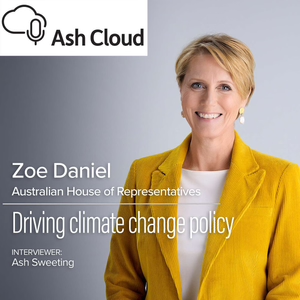
05/13/23 • 48 min
Climate policy has been weaponised in Australia over recent decades. The situation in other countries is frequently not dissimilar. The lack of real action on climate change resulted in over one third of Australian voters rejecting the major parties in preference of environmentally progressive ‘Teal’ independents at the 2022 federal election. Zoe Daniel is one of seven Teal Independent who are now working to drive positive and constructive climate policy changes across the Australian Federal Parliament.
The political will to generate and implement policies that effectively address climate change, including the economic mechanisms required for these policies to succeed, is frequently highlighted as a critical gap that needs to be overcome. Entrenched two party systems, each pandering to their base, make it easy for disruptive climate policies to remain off the agenda. Impact on climate change will remain limited without broad government leadership and policies despite the efforts of the NGO community, civil society, entrepreneurs, and the private sector.
So how does a new MP make an impact in one the rougher federal parliaments globally?
“If you come in, particularly as a new MP and expect to create massive systems change overnight, you’re going to be disappointed. So you have to convince yourself that you can make a difference by doing the kind of nudging that myself and the other independents have been doing.”
By using this approach Zoe managed to negotiate that the 43% emission reduction stipulated in the recent Climate Change Act was a floor rather than a ceiling. Her real impact came from being in the same room and having the opportunity to negotiate directly with the Climate Change Minister.
Zoe has taken a pragmatic and broad approach that prioritises creating the social license for government to implement change and bringing the community along. She expects massive economic and social changes that people will need to adjust to a compressed period and for this to be successful broad community engagement and transparency are critical. This includes managing the expectation of her constituents who are pushing from much more rapid change and ensuring there is just transition for communities who have traditionally relied on the sunset industries.
The continuing weaponization of energy, water, and food globally is a big concern. It becomes very challenging when these become bargain chips to undermine the existing global order. Drawing on her 15 years reporting from Africa, Asia, and North America she understands the cascading effects of climate induced food insecurity, water insecurity and natural disasters on political stability and displacement. Zoe also highlights the increasingly delicate balance required to keep vital communications channels open with our geopolitical rivals and adversaries.
As a foreign correspondent she frequently witnessed the suffering and destruction climate change has on the most vulnerable societies and natural ecosystems. Her time as a journalist also exposed her to the frequently divisive nature of the media, where creating conflict in the name of good story is often favoured over promoting constructive conversations.
I recently caught up with Zoe to hear more about her work, you can listen to a short summary followed by our full conversation here.
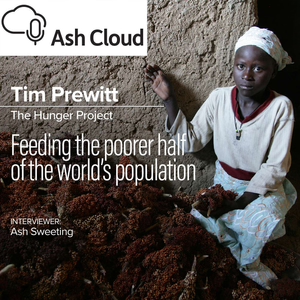
For the billions of people living on less than $5 a day the only available option with rising food prices is to buy less food. It’s easy to blame this current crisis on the Russian invasion of Ukraine. However, when you look at things more deeply there are bigger issues at play. The coupling of fuel price and food prices is crippling food systems for many of the world’s poorest people. On top of this are growing impact of climate change and the flow on market effects of countries locking up food and energy reserves for their own perceived national interest.
The Hunger Project works across Africa, South Asia, and Latin America to help millions of people end their own hunger and poverty. By far the best tool available is increasing local food production. This is especially the case if these systems are growing highly nutritious indigenous crops and include small scale livestock production.
I recently caught up with Tim Prewitt, The Hunger Project’s CEO to discuss how the current spikes in food and energy prices are impacting world’s most vulnerable. He described a small regenerative farm and agribusiness in Uganda run by Fareeda, where she grows and processes pumpkins and a few other crops.
There were no neat rows with trees and other crops dispersed across the farm. The trees included cocoa, mango, and papaya. The crops included, corn, soy, okra, melon, pumpkin, and other vegetables all growing together. You could see how the plants were working together. All the waste from the farm and business were composted and returned to the soil. The farm was feeding her family and several others around her by using these techniques. She’s really proud of her work.
Fareeda’s farms show how food can be produced locally and regeneratively. It also highlights the challenges of scaling regenerative agriculture, especially given the agricultural subsidy policies that remain highly focused on the industrial production of wheat, corn, rice and sugar. You can listen to our conversation here.
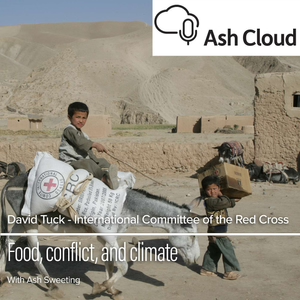
01/23/24 • 39 min
Of the 25 countries that are least able to adapt to the impacts of climate change about 14 of those countries or 56% are currently affected by armed conflict.
The intersection of conflict and food insecurity is an area of series concern in many of the places where the International Committee of the Red Cross works. The 2023 global report of food crises reported that around 250 million people globally were food insecure and in need of urgent food assistance. This is the highest level in the seven year history of the report. There are currently 100 armed conflicts globally involving around 60 states and 100 or more non state groups. The number of armed conflicts has increased over recent decades. In 2022, 120 million people were pushed into food insecurity by conflict.
Frequently it is the most vulnerable, including women headed households, that suffer the most from conflict and climate related food insecurity. This is not helped by the continuing weaponization of food, such as the restrictions of Black Sea grain export during the ongoing Russia-Ukraine war and the sieges initiated by ISIS the recent Syria conflict.
David Tuck is the Head of Mission, Australia, for the International Committee of the Red Cross (ICRC). David has spent the last twenty years working as a legal advisor at the International Red Cross across Africa, Asia, and the Middle East. During this time, he has witnessed the impacts of conflict on civilian populations including how the combination of conflict, climate change, and food insecurity have a multiplying effect that further weakens the resilience of effected societies. I recently caught up with David to discuss his work. You can listen to the conversation here.
The ICRC was created in 1863 following the Battle of Solferino. The sole objective of the ICRC has been to ensure protection and assistance for the victims of armed conflict. The ICRC is mandated globally to ensure all side of armed convicts adhere to the Geneva Conventions.

09/22/22 • 45 min
With $500 billion how would you design a completely new city and food system from scratch, to feed and house 3 million residents? The city of NEOM is being built on the Red Sea coast in Saudi Arabia. There are no legacy systems to deal with, no existing infrastructure that needs considering and maintaining. The city is literally rising out of the desert and you have an open book when it comes to planning sustainable food production and linking that with sustainable energy and water use. Funded by the Saudi Sovereign Wealth with an aim of 100% renewable energy and no ultilzation of ground water the project aims to be the city of the future.
Ray Moule is leading agricultural development for NEOM. His team is planning a food system to feed the cities predicted 3 million residents and 5 million visitors. Their plans include research needs, what new technologies will improve the sustainability of the food system, how to sustainably source water and nutrients for agriculture, creating circular economies, and how food systems are linked to health. He also has to balance what food to grow locally and what food to import.
With an average annual rainfall of 15-20 mm (less than 1 inch) and temperatures regularly reaching well over 40 degrees Celsius (104 Fahrenheit) throughout the summer new production techniques and technologies are critical to developing a sustainable food system.
I recently caught up with Ray to discuss the amazing opportunity to build a food system from scratch and the challenges in doing so in a harsh desert environment. You can listen to our conversation here.
Show more best episodes

Show more best episodes
FAQ
How many episodes does ASH CLOUD have?
ASH CLOUD currently has 48 episodes available.
What topics does ASH CLOUD cover?
The podcast is about Society & Culture, Earth Sciences, Podcasts and Science.
What is the most popular episode on ASH CLOUD?
The episode title 'It’s not rocket science, it’s not that we don’t know what to do, it’s that we haven’t figured out how to incentivise the necessary behavioural change with Britt Groosman – Environmental Defense Fund' is the most popular.
What is the average episode length on ASH CLOUD?
The average episode length on ASH CLOUD is 49 minutes.
How often are episodes of ASH CLOUD released?
Episodes of ASH CLOUD are typically released every 10 days, 2 hours.
When was the first episode of ASH CLOUD?
The first episode of ASH CLOUD was released on Sep 6, 2022.
Show more FAQ

Show more FAQ